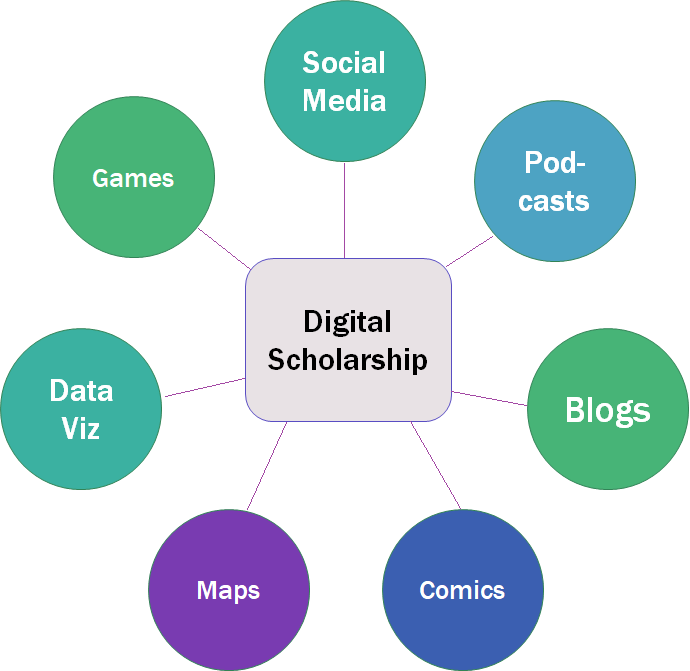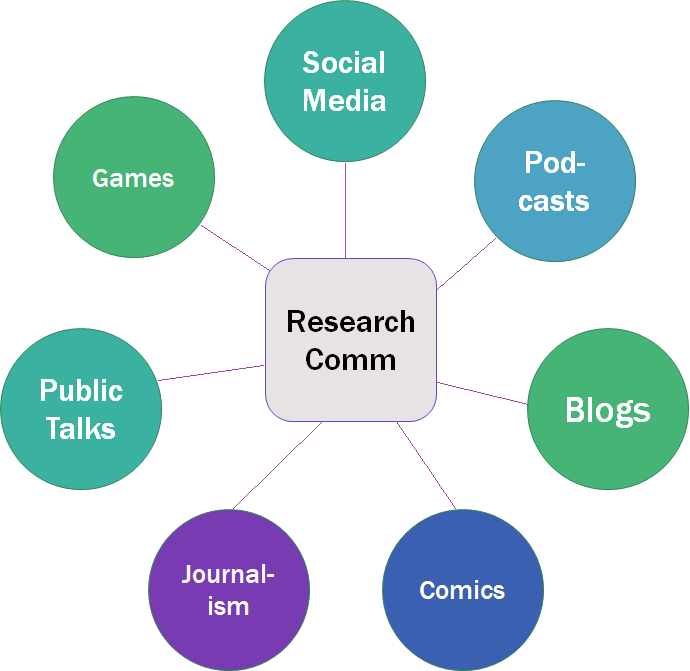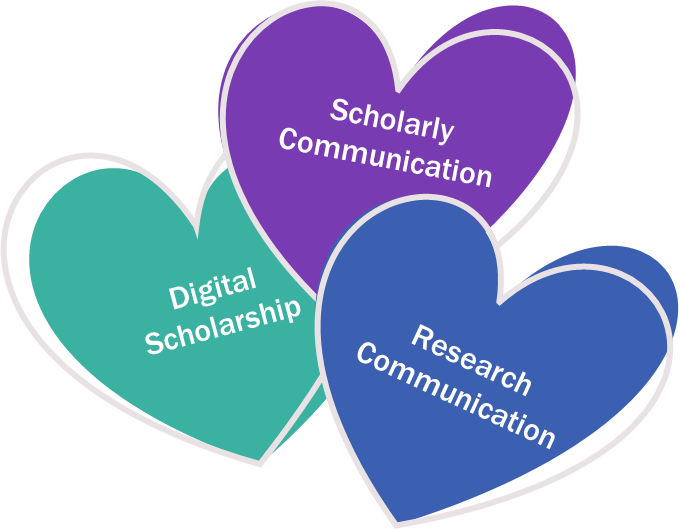
I started my career in librarianship because I saw great value in sharing information. It was no surprise then when I got involved with scholarly communication, digital scholarship, and research communication. The three fields are distinct, but have considerable overlap. I spend a lot of time trying to differentiate these fields in my mind and for my colleagues. This post is meant to help me express these lines of thinking.
Scholarly communication, for those unfamiliar, is generally considered to be the outputs of research that tell others about that research. This traditionally includes books, book chapters, journal articles, and conference proceedings.
Theses aren’t however, the only outputs of research. Researchers frequently create datasets that inform their written works. Digital scholarship –maps, interactive websites, games, virtual reality and anything else you can imagine – has grown into a common expression of research results. Blog posts, Twitter threads, newspaper and magazine articles, and podcasts have also been ways for researchers to express their research findings for a long time. These and other less formal communications are often put into the category of science communication, or, as I’ll be referring to it, research communication.
Since all of these things are research outputs meant to communicate research findings, they could all be put under the scholarly communication umbrella.

And since research communication has similar goals, perhaps books, journal articles, conference proceedings, data, and digital scholarship could also be grouped under this umbrella.

More similarities can also be found between research communication and digital scholarship. It’s well accepted that research communication includes social media, podcasts, blogs, comics, games, journalism, public talks, and more. Digital scholarship also includes social media, podcasts, blogs, comics, games, and other things that could be research communication like maps and data visualizations. Two things that fall under research communication that don’t fall under digital scholarship -probably- are public talks and journalism. And even then there are probably examples where that’s not true.


But despite the interchangeability of the umbrella-ness of these fields, they aren’t interchangeable concepts. That have a variety of differences, but one of the big ones is the audience of each.
Scholarly communication is largely directed at other researchers and academics. Research communication is directed at the general public. Digital scholarship may be meant to reach either audience, but leans towards other academics. Digital scholarship differs from scholarly communication and research communication in how it approaches the work.

Digital scholarship is concerned with the methods and tools of creating these projects. It takes into account findability and how the projects can be accessed, preserved, and reproduced over time. Digital scholarship is probably the most involved in critically evaluating the ethics involved in the work of creating projects, followed by research communication. Scholarly communication, being the most entrenched in The Way We’ve Always Done Things in academia tends to consider ethics with the lightest touch (which is not at all to say people working in this field aren’t thinking about ethics – there are great folks in the field who are indeed considering these aspects).
Scholarly communication, digital scholarship, and research communication are perhaps less competing umbrellas and more different parts of a mobile. Or a Rubic’s Cube. Or a relational database. In any case, they all serve important functions in communicating research to people and I therefore love them all. More importantly, though, the deep relationships between these three fields means they can learn from and teach one another. Education is another heart in this collage, but that is a post for another day.

